The Supermicro AS-2115HV-TNRT is really cool. Is this a workstation, or a server? That is a valid question. What is not in question is the awesome specs, supporting an AMD Threadripper Pro processor, up to four double-width GPUs, high-speed networking, and more. This all comes with the ability to overclock the CPU and memory and get even more performance while also having out-of-band management in a 2U chassis. We have a lot to get into here, so let us get to it.
Supermicro AS-2115HV-TNRT External Hardware Overview
This is one of the most versatile systems we have used, but the chassis is one we recognize. At 2U of height and 31.74″ (806.2 mm), this is a standard Supermicro 2U chassis.
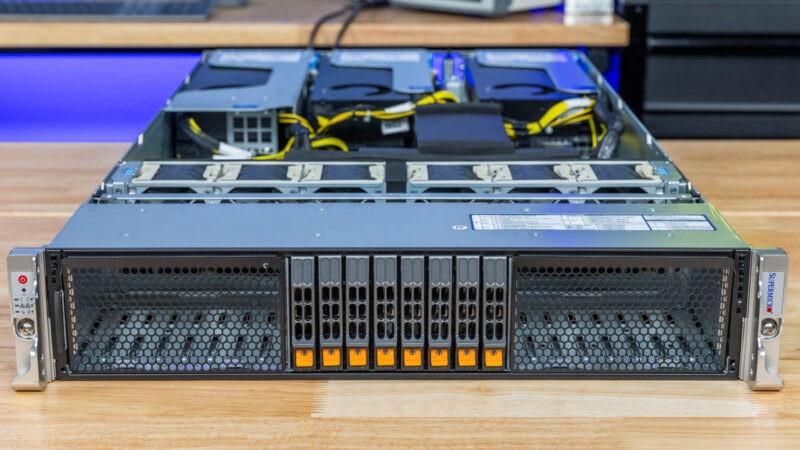
When we say this is a chassis we recognize, here is the Supermicro SYS-222H-TN we reviewed. You can see that we are using the same chassis building block.
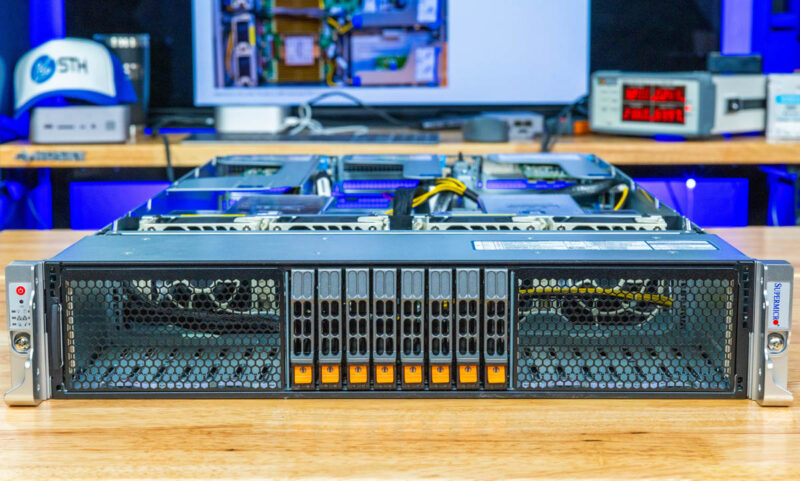
On the left ear, we get status LEDs and the power button.
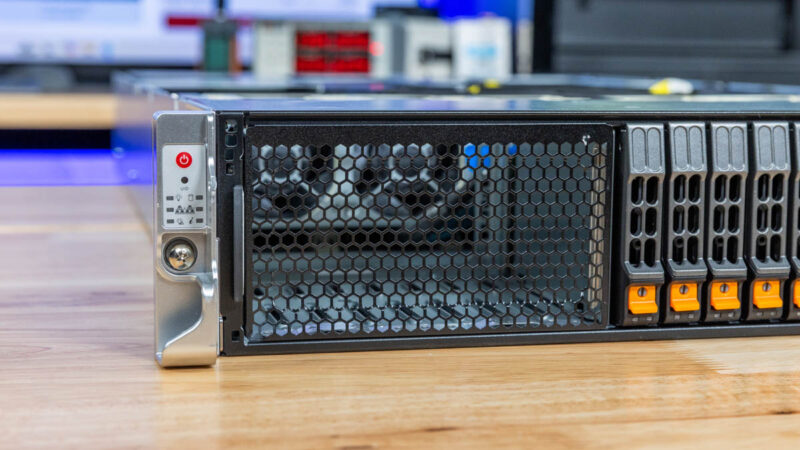
In the center, we get eight U.2 NVMe drive bays.
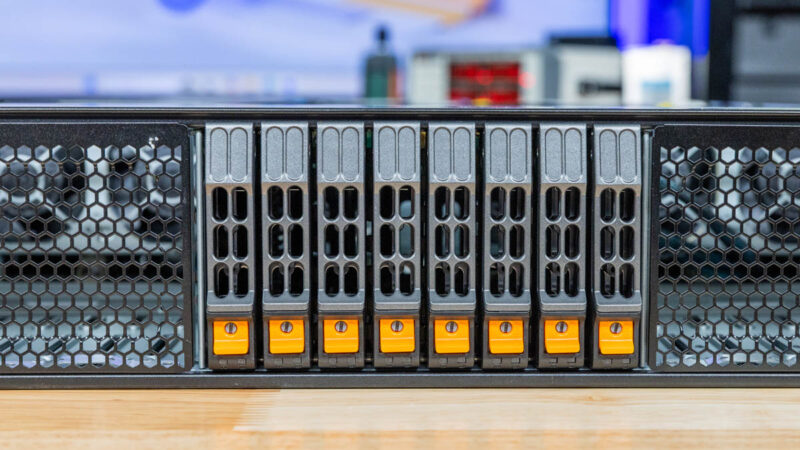
On the right, we get another vent for airflow. This type of design has become more popular as a way to maintain 2U rack height while still allowing massive amounts of airflow to the CPUs and accelerators.
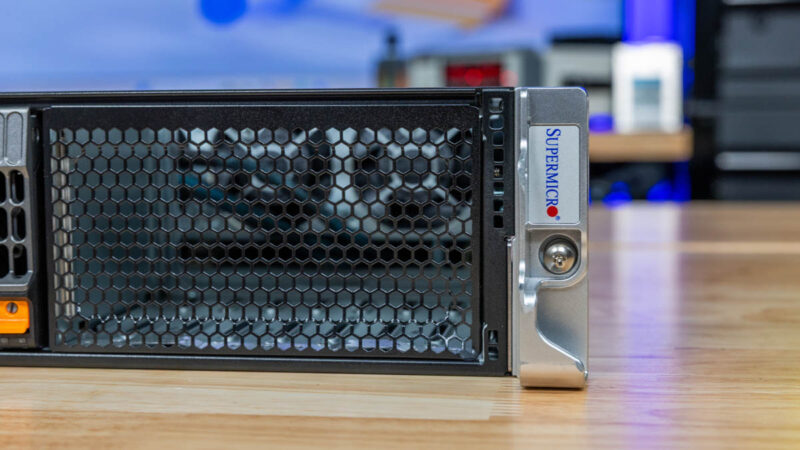
On the rear, we get a very standard Supermicro layout iwth the power supplies on the left hand side.
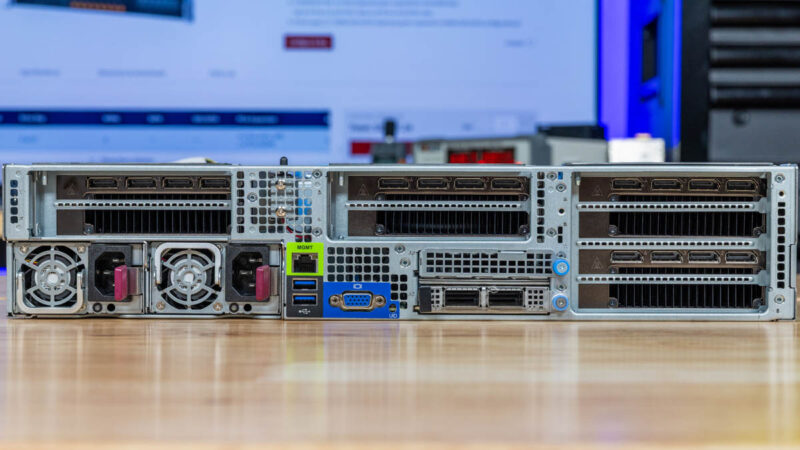
Above the two power supplies is a double-slot PCIe riser.
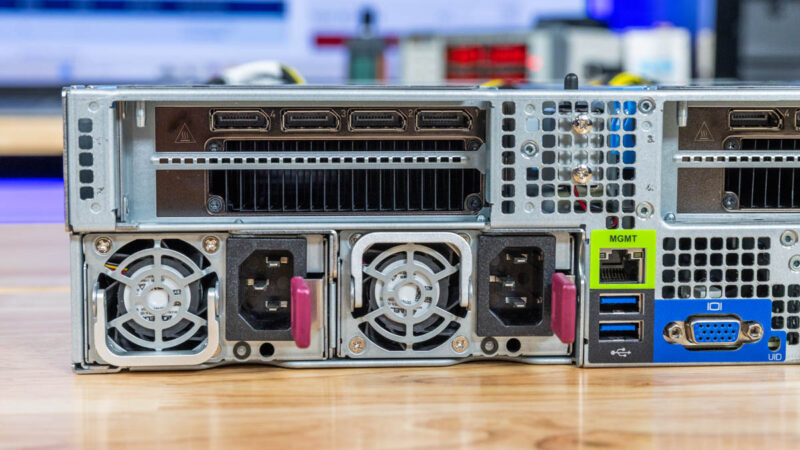
In this riser, we have a NVIDIA RTX 6000 Ada. This is a rack mountable workstation, so it is common to have workstation class GPUs installed.
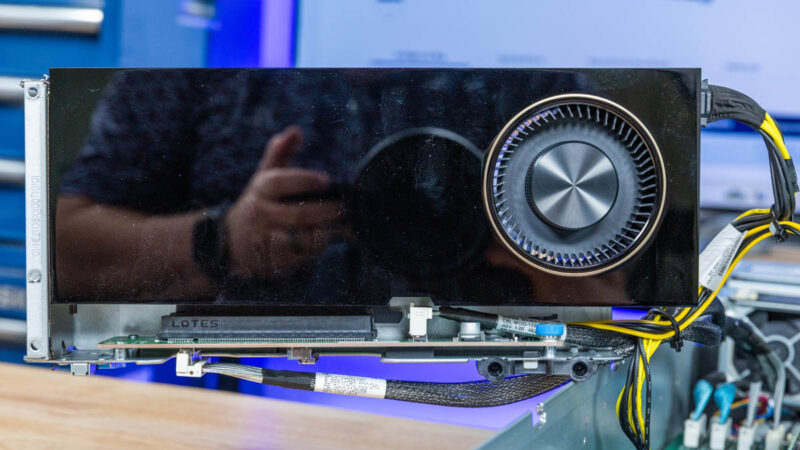
In the center, we have only an out-of-band management port, two USB ports, and a VGA port for local access.
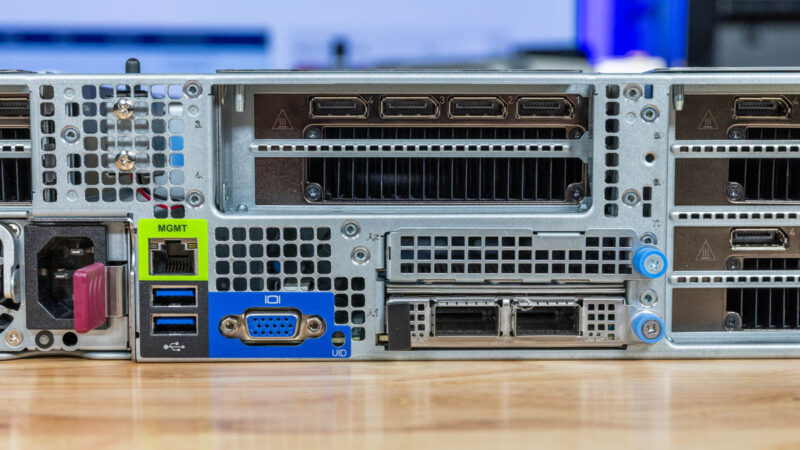
High-speed networking is provided by an AIOM which is Supermicro’s OCP NIC 3.0 SFF with pull tab design. In this system, we have a duall 100GbE NIC. High-speed networking in this class of rackmount workstation is common because these are often connected to shared storage for networking, AI, or graphical/ video workflows.
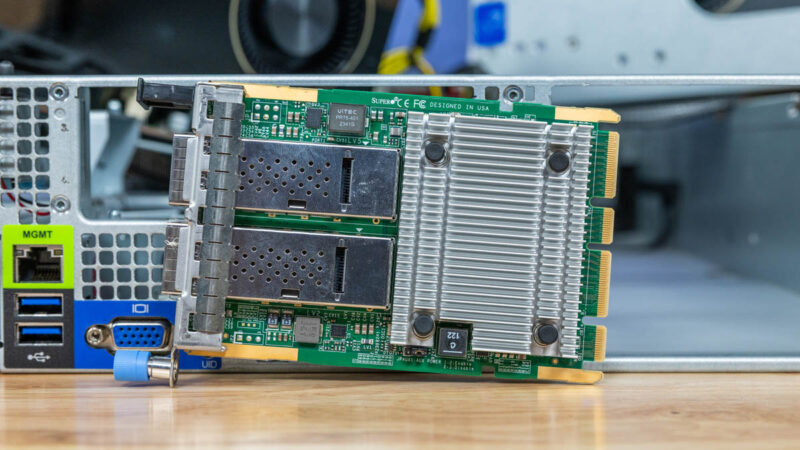
Above the rear I/O and the AIOM is another riser. Both the center and left rear risers are fully cabled so they do not fit into a riser slot on the motherboard.
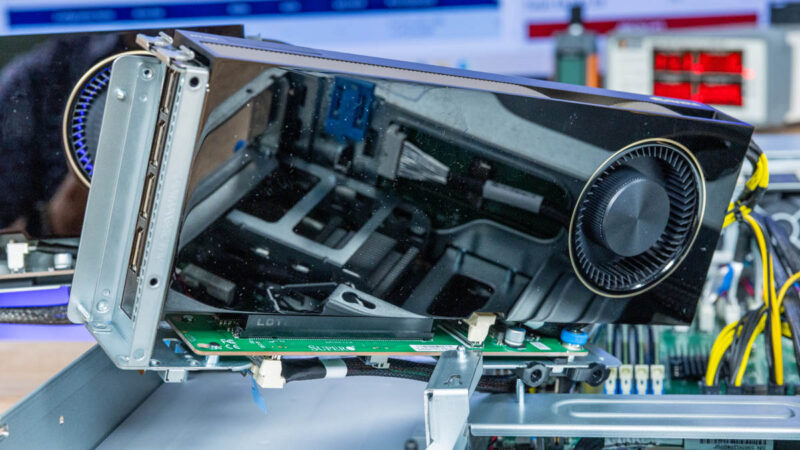
On the right rear, we get another two double-width riser.
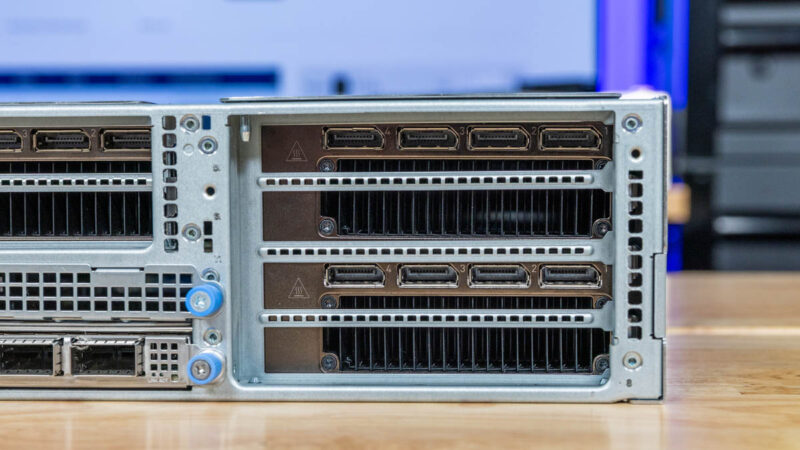
Here we have two more NVIDIA RTX 6000 Ada 48GB GPUs for four total. Supermicro also has other riser options in this chassis, but we are more GPU focused on this one.
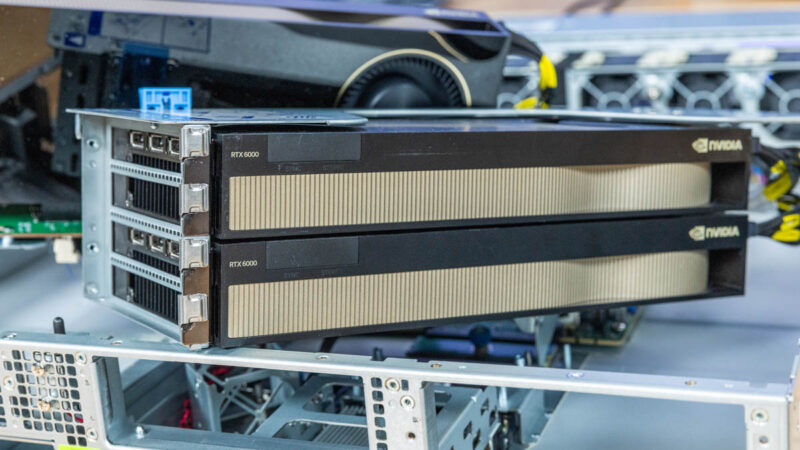
The NVIDIA RTX 6000 Ada is a neat GPU since you can buy four of them for around the cost of a Hopper generation GPU with HBM while getting more aggregate memory and compute. Further, for a rackmount workstation, where graphics capabilities are required, having the RTX cores in a GPU like this is very useful.
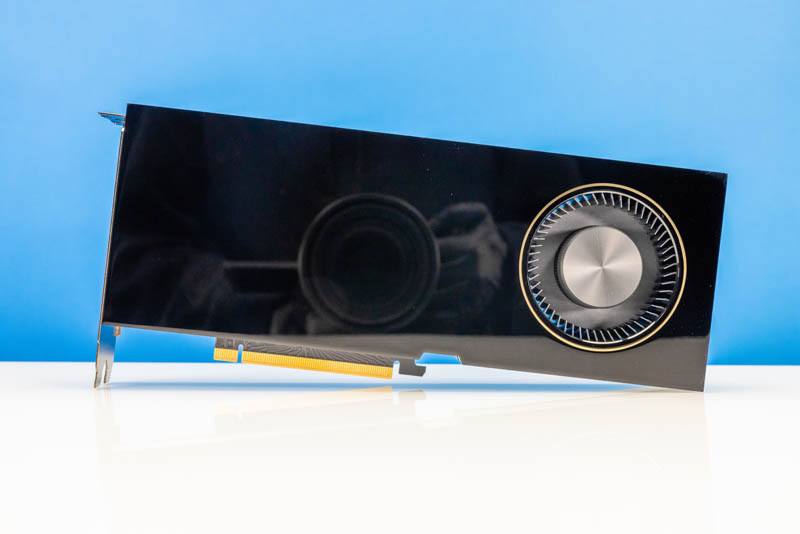
Next, let us get inside the system to see what is driving all of this.

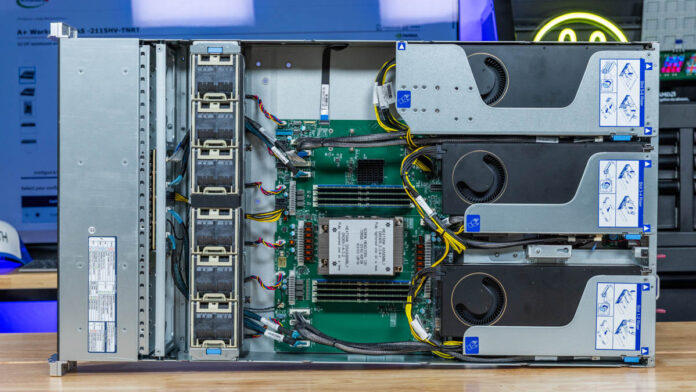
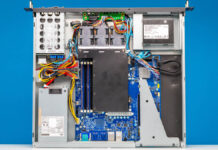
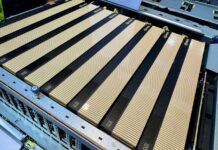
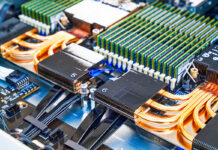
I think what differentiates a workstation and a server is that you would work at a workstation and work at a distance from a server; partly because of a 1U server’s 40mm fan cacophony and partly because of the lack of audio or numerous USB ports. Also a workstation case would be at least somewhat attractive (not that all 1U servers are plain or ugly) and probably at least 3U so it didn’t topple over.
Some of that was covered in the STH articles: “Supermicro AS-5014A-TT AMD Ryzen Threadripper Pro Workstation Review” and “Gigabyte MC62-G40 AMD Ryzen Threadripper Pro Motherboard Review”.
I used a couple of Dell PowerEdge R720 servers as workstations for many years. Not too surprising as you can buy workstation variants of them with much the same inside.
Biggest difference I’ve found is that servers tend to have a lot more remote management capability (e.g. remotely accessing the BIOS setup, installing an OS remotely), as well as significantly longer boot times (around 15 minutes in the case of the PowerEdge). They also tend to be stricter with the PCIe cards they accept – I never had much success getting consumer USB 3.0 support on the PowerEdge, it kept failing with PCIe training errors during boot when the cards were present and I tried a couple of different types. Yet higher end cards like NVMe SSDs were fine.
But at the end of the day they are all PCs inside so they can be used for whatever purpose you want.
My biggest question is that as Supermicro doesn’t seem so popular here in Australia, how are they with support and warranty? Most people here are either Dell or HP because of their next-day support models, but I know nothing about Supermicro in that respect.
Threadripper 7995WX costs three times more than similar EPYC 9654(P). In the rack server EPYC seems more appropriate (and 12 memory channels give the advantage).
Doesn’t the 7995WX boost to 5.1GHz while the EPYC 9654 caps at 3.7GHz? For lightly threaded workloads the performance difference is substantial: I wouldn’t compare them.
I do not see any mention of noise. Is this usable in a quiet office?
In order to be a workstation, I’d expect it to at least have a tower conversion kit (the way some HP Itanic servers had). That, and also be quiet (which is hard at 2U and 4 GPUs)
This would be great for gaming lol, put it in the basement, For audio i guess you can use a sound card.
@Kanaro If you mean playing games in the basement sure, but if you want to run cables up to another room, it’s surprisingly difficult. I put my machine in a rack and used three metre cables to connect it up to my desk and had so many problems even at this short distance, that I after a few years of messing about I gave up and went back to a couple of PCs sitting on my desk.
For one, DisplayPort tops out at around five metres (especially at 4K@60Hz), and at this length random electrical noise often causes the picture to drop out for a few seconds at random intervals. It’s annoying having the screen go black for five seconds when watching a movie, but I imagine it would be even more annoying in the middle of a game.
USB also tops out at around three metres, and to go beyond this you need amplified cables which aren’t especially reliable. One basic keyboard I had would randomly disconnect and reconnect causing lost keystrokes, and my main backlit keyboard wouldn’t work at all due to the voltage drop across a five metre active cable, until I added a 5V power injector at the device end of the cable. Using USB sticks was an absolute pain, as even though I connected them via a powered hub, I found many of the files I was writing became silently corrupted.
After that experience I definitely wouldn’t recommend locating your machine more than 1-2 metres away from all your peripherals. It’s not worth the effort or expense trying to get everything working properly.
The real difference between workstation and server is OS support. Does Windows have drivers for this machine if you run Windows 11? Or driver support for Windows Server? This matters maybe not to the homelabber, but it matters in the enterprise world when talking about support, maintenance, security, etc.